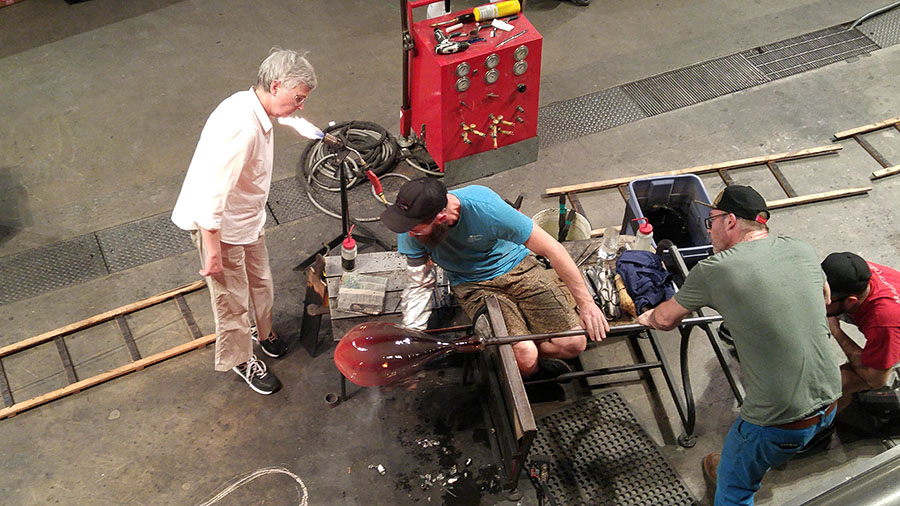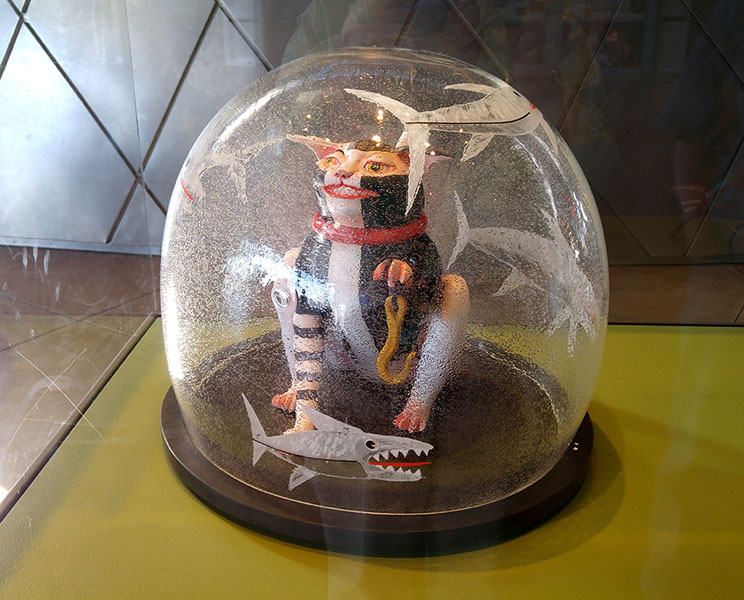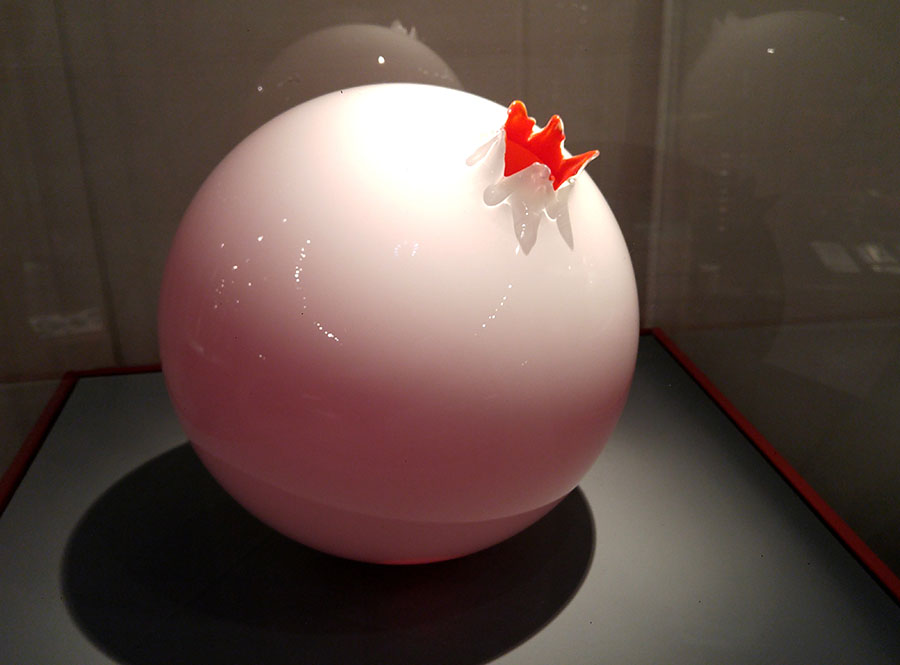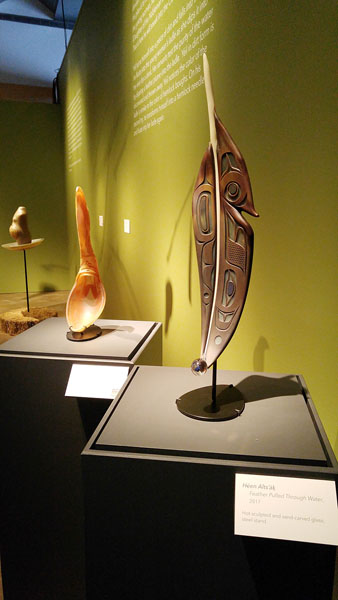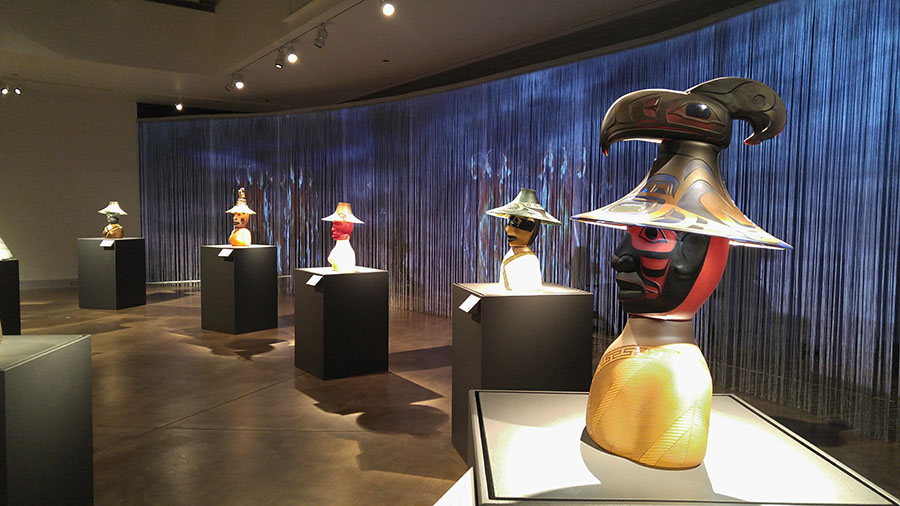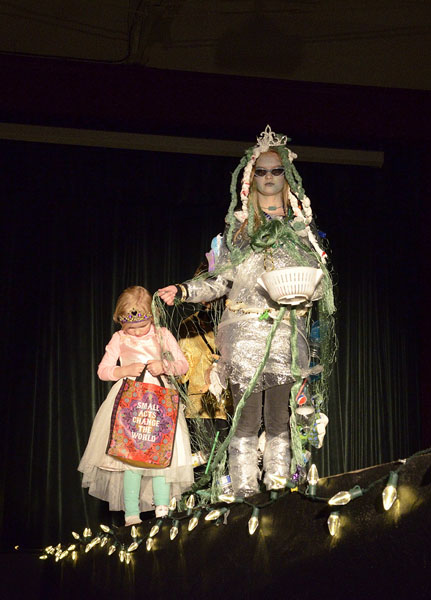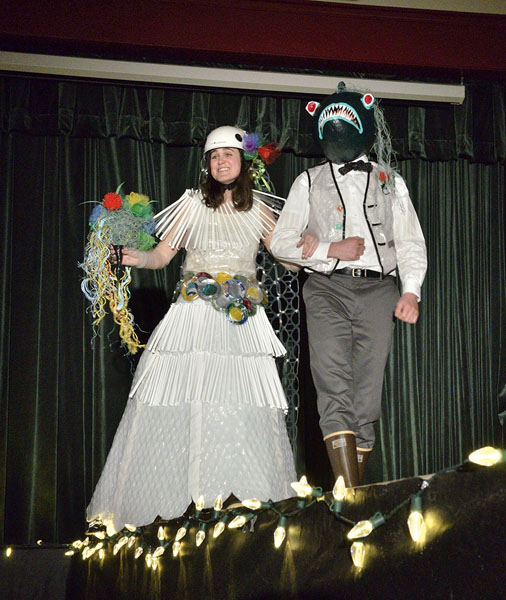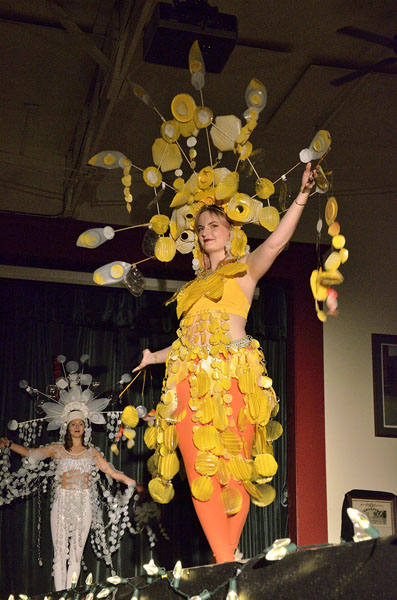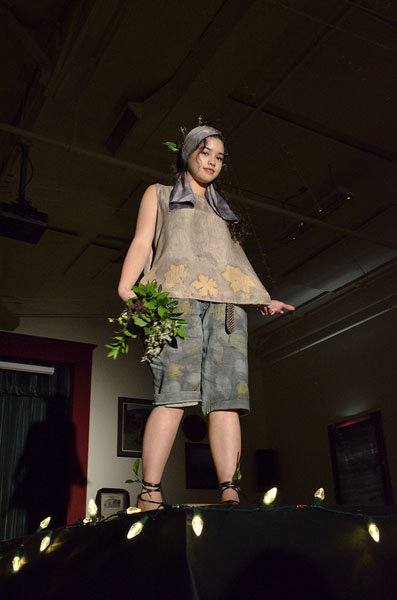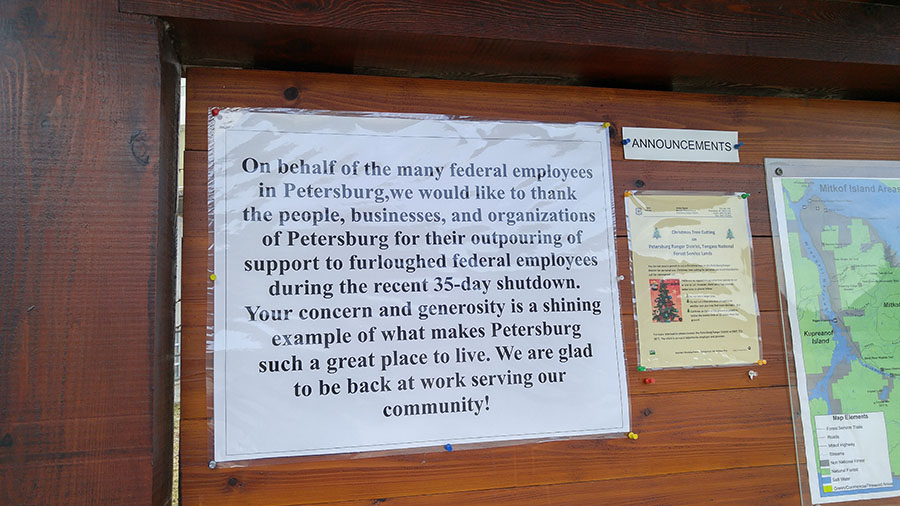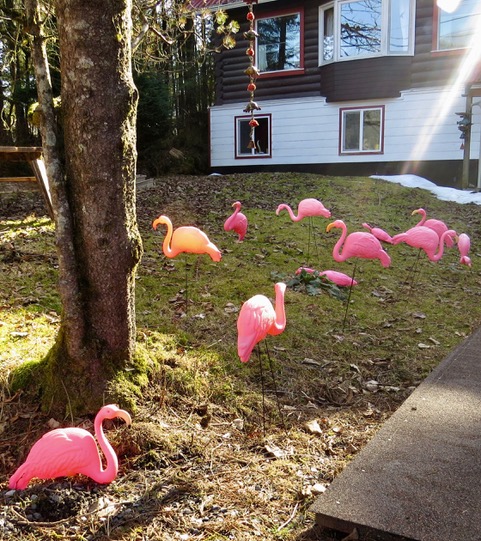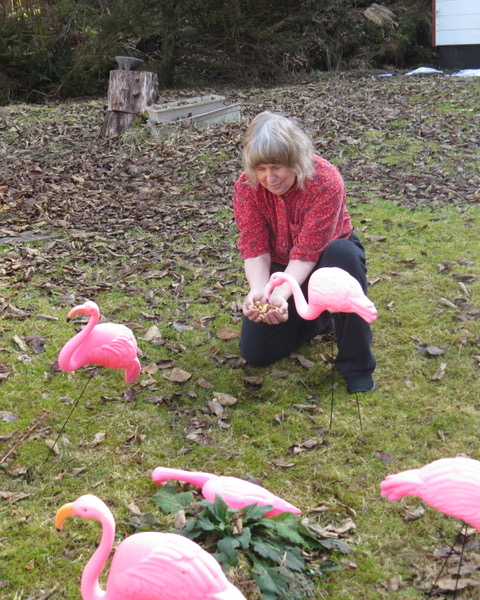“On the hard” is what boaters call it when we have the boat hauled out of the water and blocked up on the land. We were due for our every-three-years bottom maintenance – not our favorite thing, but important to do. We cruised 40 miles down to the town of Wrangell, which has a big boat yard and two large travel lifts: 150 tons and 300 tons. The consolation prize for the disruption and hard work was that we could spend some time with our Wrangell friends (which was wonderful).
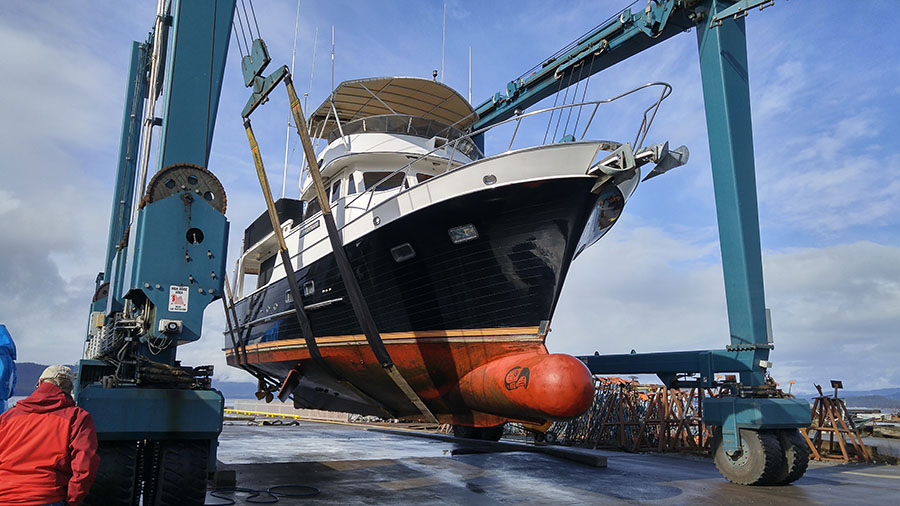
We cruised ADVENTURES into the lift well, and this giant frame (a travel lift) loomed over us while workers positioned the straps under the boat. This lift has a 150 ton capacity, which means that it doesn’t have to work very hard to lift our 32 tons.
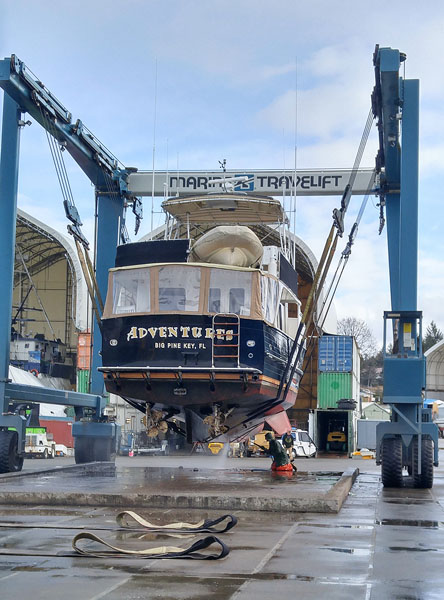
Once we were up and out we had a hired guy power wash the slime and marine growth off the bottom paint, and the pad we’re suspended over collected all the barnacles and bottom paint residue for proper disposal. It takes every bit of 90 minutes to get the bottom clean, including bringing in a beefy diesel-powered washer to get the barnacles off the running gear (props, shafts, struts and rudders).

You can see lots of small barnacles on the rudders and the center of the props, and some mussels on top of the rudders and tops of the struts. I didn’t dive on the boat in the fall to clean the gear as I normally do, knowing that we would haul out this spring. Overall the boat’s bottom was in pretty good shape after three years!
We had a crew do the bottom painting – they can do it much faster than we can, but we do all the rest of the work. They had some really cool toys – I want one of these! Can you imagine how much easier it would be to work on the higher spots on the boat with this tracked scissor lift?
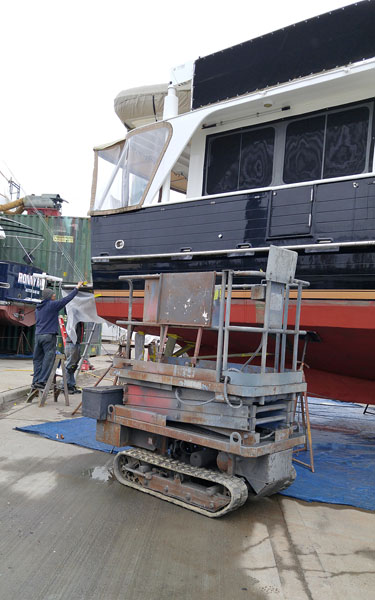
We both worked for about a day and a half removing all the old paint and coatings off the shafts, struts, rudders and props. I’m sure Jim is smiling under his mask…
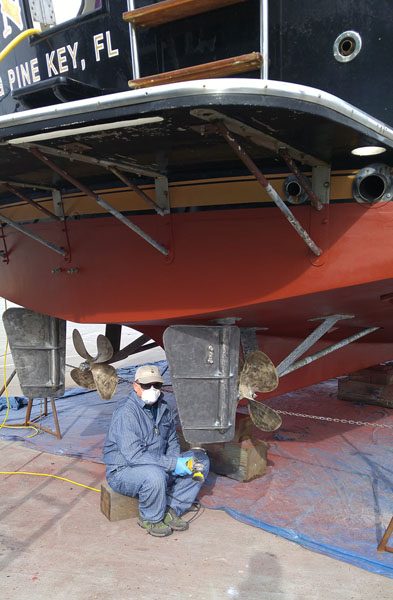
…and I (the painting department) installed all new zincs and applied the various special coatings to keep the growth off the running gear.
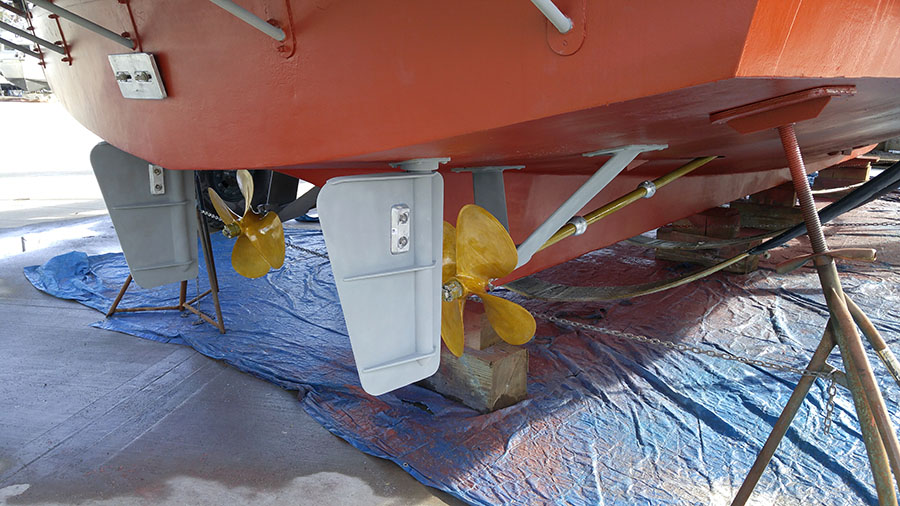
Our last big chore was to replace the seals on our stabilizer fins. The fins have a 2″ shaft that sticks out from the boat on each side, with a 6 sq. ft. fin on each. Inside the boat a gyro controls an engine-driven hydraulic pump to move the fins to counteract roll. They give us a nice ride in lumpy seas, and we wouldn’t want to go out in big water without them!
The fins are very heavy (almost 100 lbs. each), and they’re pressed onto a tapered shaft. To remove them, Jim took the retaining bolt out and replaced it with a hydraulic fitting. The little video shows how he blew one of the fins off.
He checked over the shafts and replaced the two seals that keep the ocean on the outside of the boat…
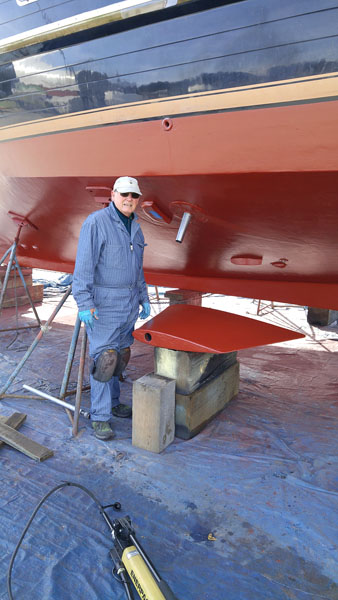
…and then he used a very long wrench with a torque adapter to re-install the fin onto its tapered shaft.
We still live aboard whenever we’re “on the hard”, which means that we can’t shower or wash dishes since those things drain out the side of the boat and would make a mess on the ground. It’s a good way to stay in shape, since we have to climb a ladder to get up to the boat a gazillion times a day, and it’s a good walk to the yard’s bathroom or over to the local laundromat where we can buy a shower for $3. No matter how many old rugs and mats I put around, it’s impossible not to track grit and dirt all around the boat. Life is hard, on the hard… but that keeps us motivated to work hard and get it over with!
The happy moment comes when the travel lift starts heading over to get us and put us back in the water. As soon as we were afloat and got the engines started, we cruised back home to Petersburg. Enjoy the ride!

